Contribute
| South Asian Art History - In Memory Of Prashant H. Fadia |
Ranjani Saigal
06/26/2007
The Sri Lakshmi Temple follows the Dravida architecture. The sculptors Sri Ganapathy Sthapathy from the Institute of Architecture and Sculpture in Tamil Nadu and Sri Muthian Stapathy were the designers who guided the creation of this beautiful structure.
“People who are Stapathy†have learned the art of temple architecture. They have the right training to design a temple based on Agama Sastras,†says Priest Balaji Bhattar. Sthapathis and Acharyas hold an esteemed status in the Hindu society, they equate Stapathi to Mata (Mother) and Acharya to Pita (Father). As mentioned in the earlier article, Vastu Shastra is the basis for temple architecture. “The temple is a reflection of the human being and has a one to one functional correspondence with many of the human parts,†says Balaji Bhattar.
Architecture according to Vastu Shastra begins with the drawing of a Vastu Purushan (Vasthu Human) as the first layer of the plan. There is a lovely story that speaks of the origin of this tradition.
It is believed that Bramha the creator of the Universe had a habit of experimenting with some rather impractical creations. Out of the Void, Brahma created a large and monstrous creature that grew so rapidly and large that its shadow fell across the Earth as an eternal eclipse. Then this ever-expanding Monster began to devour everything in its path for nothing could satisfy its insatiable hunger.
Shiva and Vishnu complained bitterly to the elder Brahma. They begged that something be done before all of Creation was destroyed by this Creature. Brahma listened to these complaints and it made him aware of his sovereignty to the other creations. He then called forth the Asthadigapalakas, the Devas of the eight cardinal directions. Together they overpowered the Great Monster and in one cosmic tackle, they held it flat against the Earth. Brahma jumped in the middle and held the Monster down. He then employed forty-five gods to join him and help hold it in place; their positions can be seen on the classic mandela of the Vastu Grid.
But, the Monster lamented “Why am I being punished for being the very thing you made me?†Brahma heeded to its complaint. “We shall compromise,†Brahma said. So, he made the Monster immortal and promised that he would be worshipped by any mortal that built a structure over him. The Monster was pleased and Brahma then named him Vastu Purusa and blessed him with these words: “All works on the earth will have to be commenced and concluded only after propitiating you.†In essence, without respecting Vastu Purusa nothing will happen on the earth.
The Mandala grid is constructed the same way as the bagua, which is used in Chinese geomancy, with every direction having significance in the well being of its residents. The position of Vastu Pursua and the direction of the natural elements are shown.
The temple resides on about twelve acres of land in the town of Ashland, Massachusetts. To understand the architecture , visualize a sleeping 'Vasthu Purushan' (mythical Vasthu Human). At the head is the central structure of the temple. It is the sanctuary known as the Vimana, of which the upper pyramidal or tapering portion is called the Sikhara or Gopuram, meaning tower or spire. Inside the Vimana is a small chamber known as Garba Griham (womb-house) for the reception of the Deity and it is entered by a doorway on its inner, and usually, eastern side from a second room called the Mukhamandapa or Ardhamandapa. The word Graba Graham has a special significance. The word Garbha means Womb. As we all know in the womb there is constant growth. It is growth that defines life itself. Hindus believe that the Deity is constantly growing in the Graba Graham. Devi is life itself and it is from Her divine living powers that we get our spiritual powers.
The open space or the Mahamandapam is situated in the heart of the Vasthu Purushan. This is where the devotees gather to pray. The symbolism here is that just as in the heart the bad blood comes in, gets purified and the good blood leaves, so also devotees come, get purified in the Mahamandapam and leave with sins washed. The Dwajastambam is located at the part where the stomach is supposed to be. Food for various Gods is offered at the Dwajastambam. Devatas representing "Sankam", "Chakram" and "Yupam" reside here. A special tree trunk of, fifteen feet in height, was brought from India, and has been placed and clad with brass decorations. Special flags are raised during each of the festivals conducted for Sri Lakshmi and other sanctums of the temple to mark the occasions. At the spot below the stomach is the point where the waste is thrown out. The sins that devotees leave behind are considered as the waste of the temple and they are sacrificed at the Bali Peetam (sacrificial alter).
“If we follow Vasthu completely in designing the temple then various points in the temple should follow the human body proportion. Of course with the constraints on available space this is not quite possible anymore,†says Balaji Bhattar.
At the feet we have the Rajagopurum. In the old days the Rajagopuram was the tallest structure in the city. The Rajagopuram is a fine representation of Hindu temple architecture. It has many sculptures and decorations placed in it, meeting the requirements of a solid structure. When the deities are taken out of the temple, they leave and re-enter the temple via the Rajagopuram. There are pots on the top of the Rajagopuram that are filled with a special kind of seed that is supposed to handle lightning. Thus the Rajagopuram being the tallest structure and being capable of arresting lighting protects the town from such calamities. Sri Lakshmi Temple's Rajagopuram stands fifty feet tall from the ground. It has many beautiful architectural sculptures in it, thanks to the work by Sri Muthiah Sthapathi of Madras and his Silpis. It took more than two years to complete this structure. As part of the dedication ceremony, special religious rituals were performed by visiting priests from India and our temple priests. Vedic hymns were chanted and "Havans" were conducted with special offering to the ritual fire during the celebration to "infuse" life into the Rajagopuram. Seven copper "Kalasas" (domes crossbow for hunting) were installed on top of the Rajagopuram and were consecrated. On the Kumbhabishekam day the main priest reached the top of the Rajagopuram and other vimanam , and poured the "holy" water to signify the divine nature of the towesr. It is believed that just having a glimpse of the Rajagopuram, even from far off, is equivalent to coming to the temple and offering prayers to the deities in the temple. Thus a tall structure helps those [sick, aged etc] who cannot make it to the temple to get the benefit of coming to the temple.
The initial funding of Rs. five lakhs for the temple was obtained as a loan from Thirumalai Thirupathi Devasthanam. Thus Thirupathi Balaji Himself served as an angel investor for the Sri Lakshmi temple.
Is our temple unique in that in the temple of Mahalakshmi we also have Nataraja, Murga and other Gods belonging more to a Shiva sect? “Not at all†says Balaji Bhattar. In every temple every Bramha Vishnu and Shiva in their various aspects are always represented. Even if you see the great Braghdeeshwara temple in Tanjavur dedicated to Lord Shiva, on the Rajagopuram you will have representation of Bramha and Vishnu,†says Bhattar.
In the Srilakshmi temple, as we enter through the side entrance the first sanctum sanctorum we encounter on the left side is one dedicated to Lord Ayyapa, the God originally enshrined in the famous temple of Sabrimalai in Kerala. He is supposed to be the son of Lord Vishnu and Shiva and thus called “Hari Hara Putraâ€.
The main shrine has Mahalakshmi flanked by the shrines of Ganesha and Balaji. On the right there is the shrine of Nataraja whose vigraham is topped by an ‘Alankara Mandapam’. “Our temple is one the rare temples where Lord Shiva is worshipped in the form of Nataraja and not a Shiva Lingam,†says Priest Bhairava Sundaram.
Facing the main shrine near the Dwajastambam we have Garuda, who is the vehicle of Mahavishnu. Further to there on the right side is the shrine of Lord Muruga (Karthikeya) who is the son of Lord Shiva and Parvathi. He is present with His consorts Valli and Devayanai. Adjacent to that shrine is the Navagraha or the shrine of the nine planets. Next to that we have the shrine for Hanuman placed directly facing Balaji (Ramadoota in front of Rama).
In the next article we will examine the famous Braghadeeshawara temple and try to understand why the Taj Mahal overshadowed this engineering marvel as the most famous Indian monument.
You may also access this article through our web-site http://www.lokvani.com/
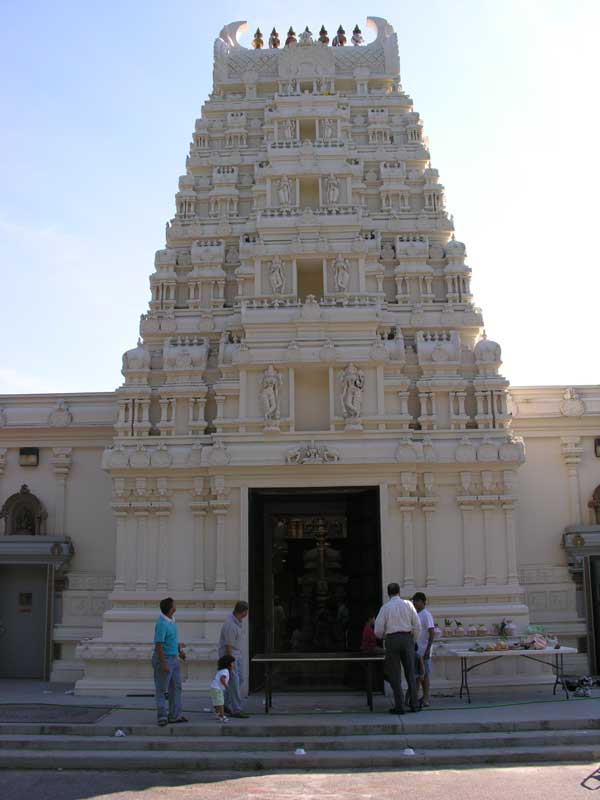
Temple Rajagopurum
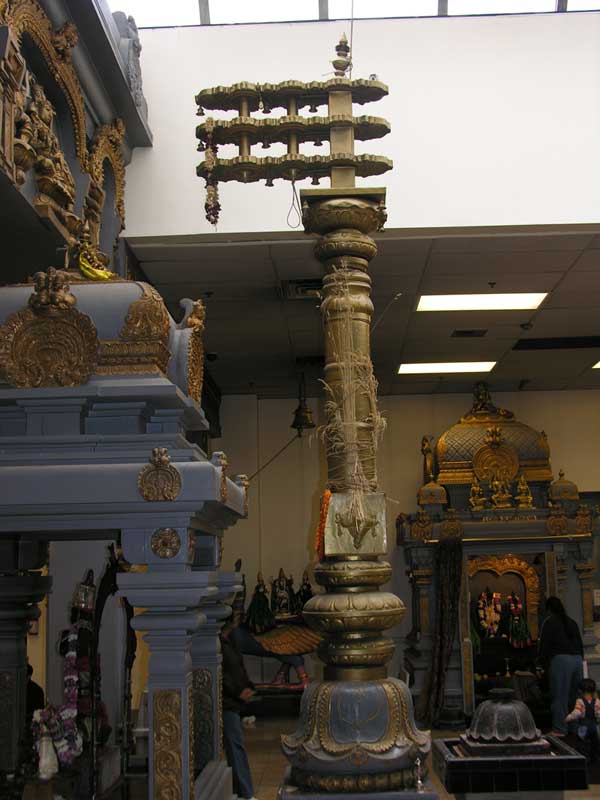
Dwajasthambam
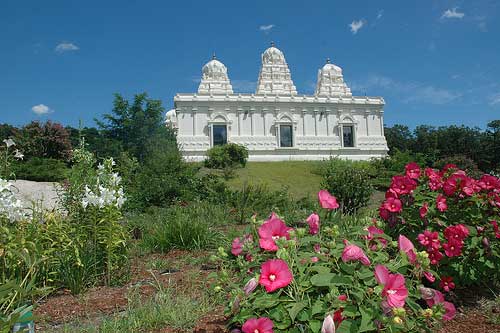
Vimanam on the Shrines of Goddess Lakshmi, Lord Ganesha and Lord Balaji
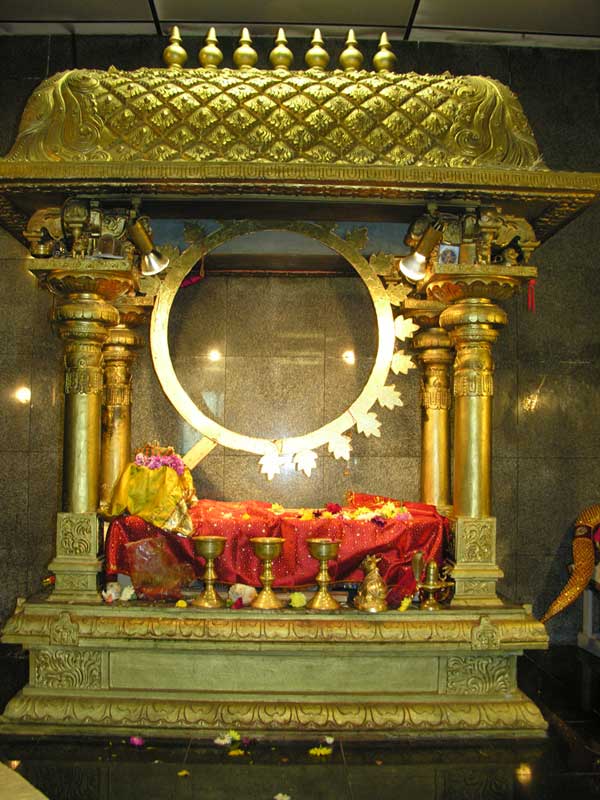
Alankara Mandapam
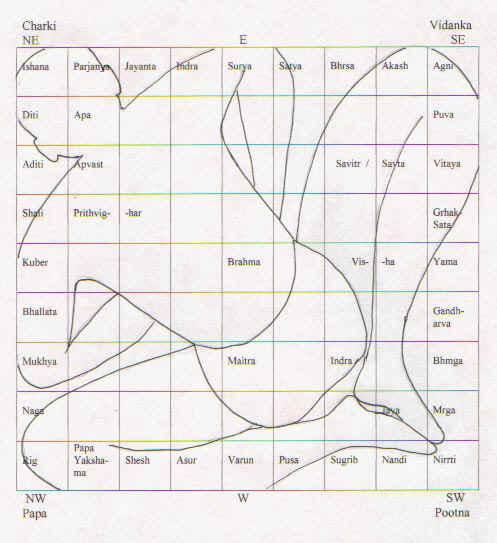
Vastu Purusha Mandala
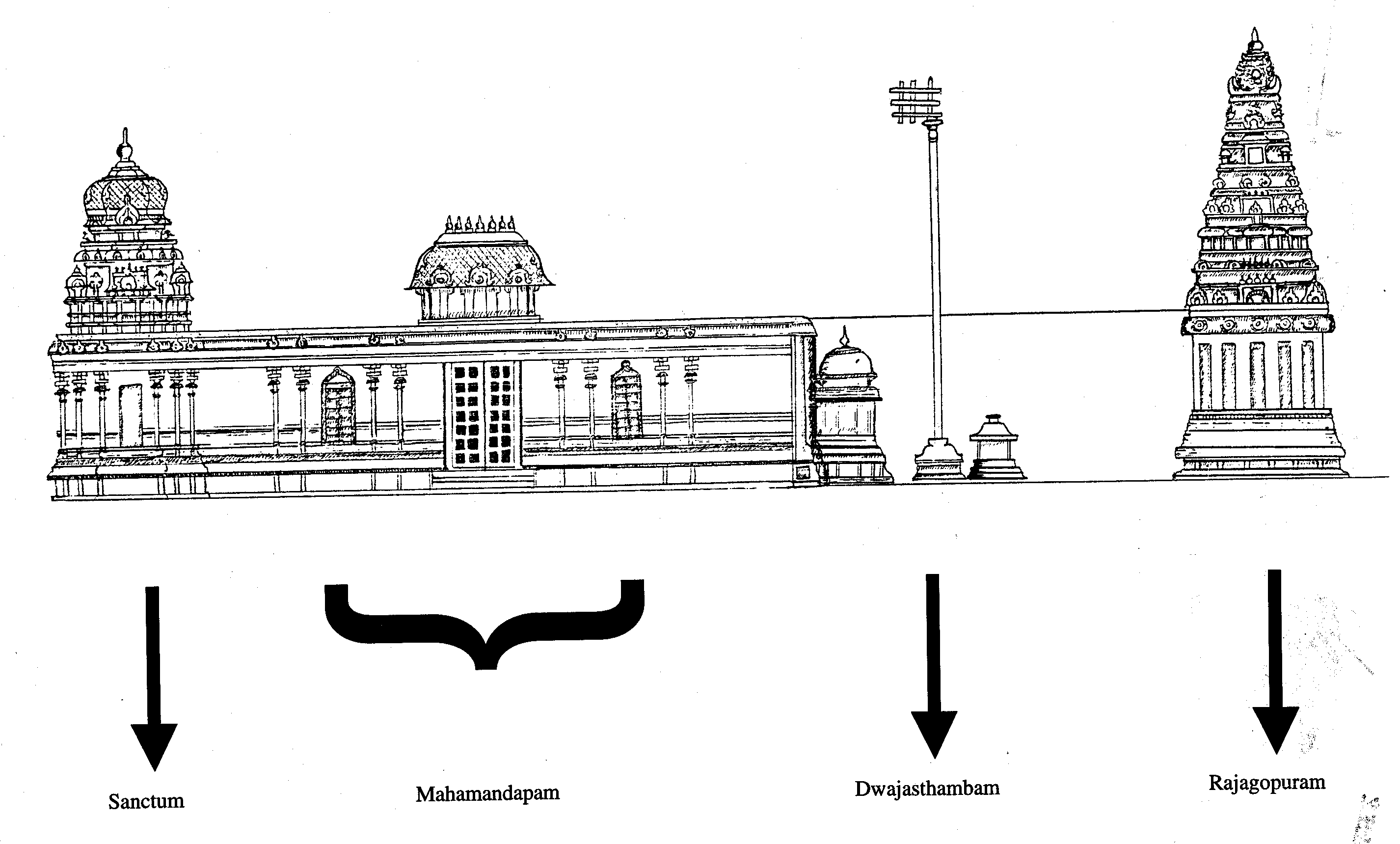
Temple Layout